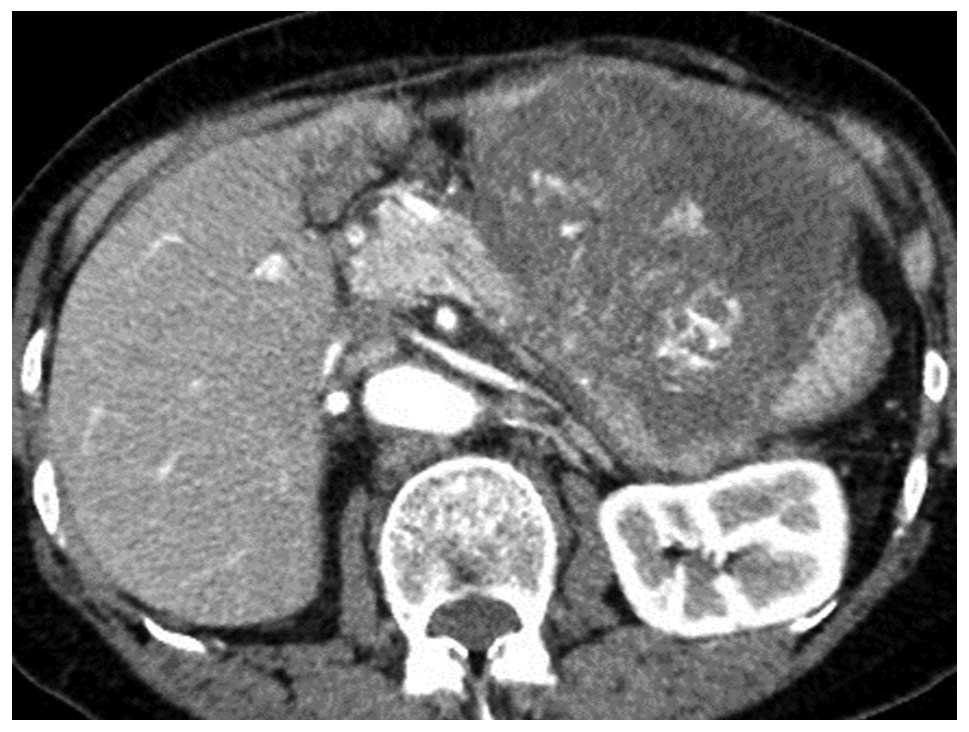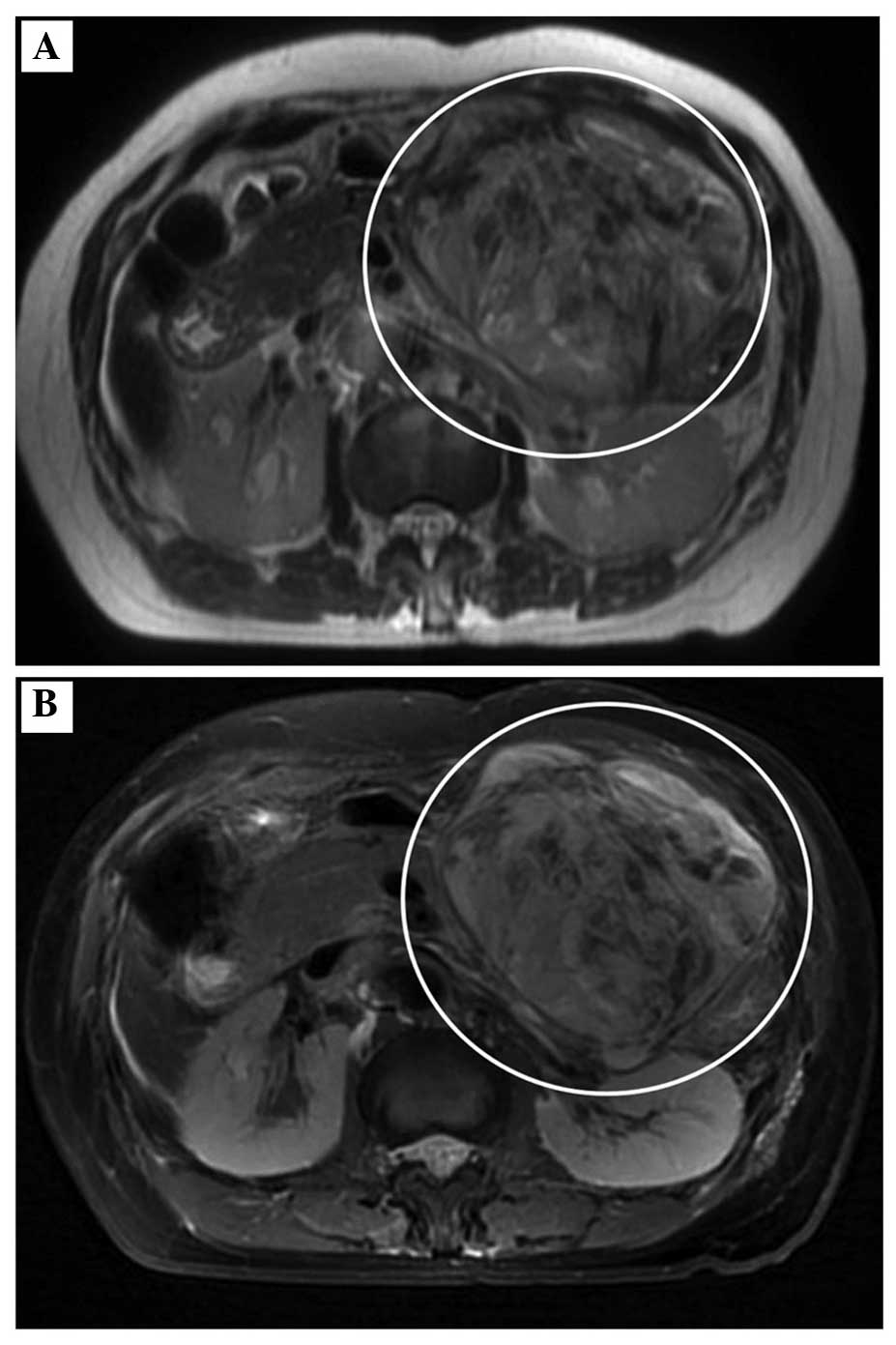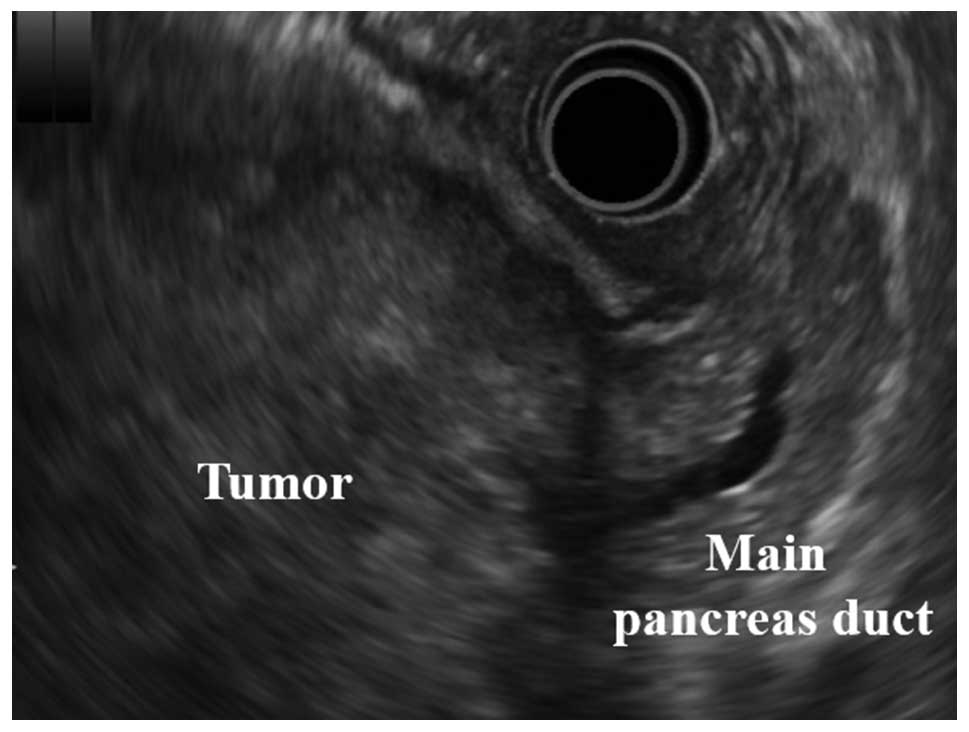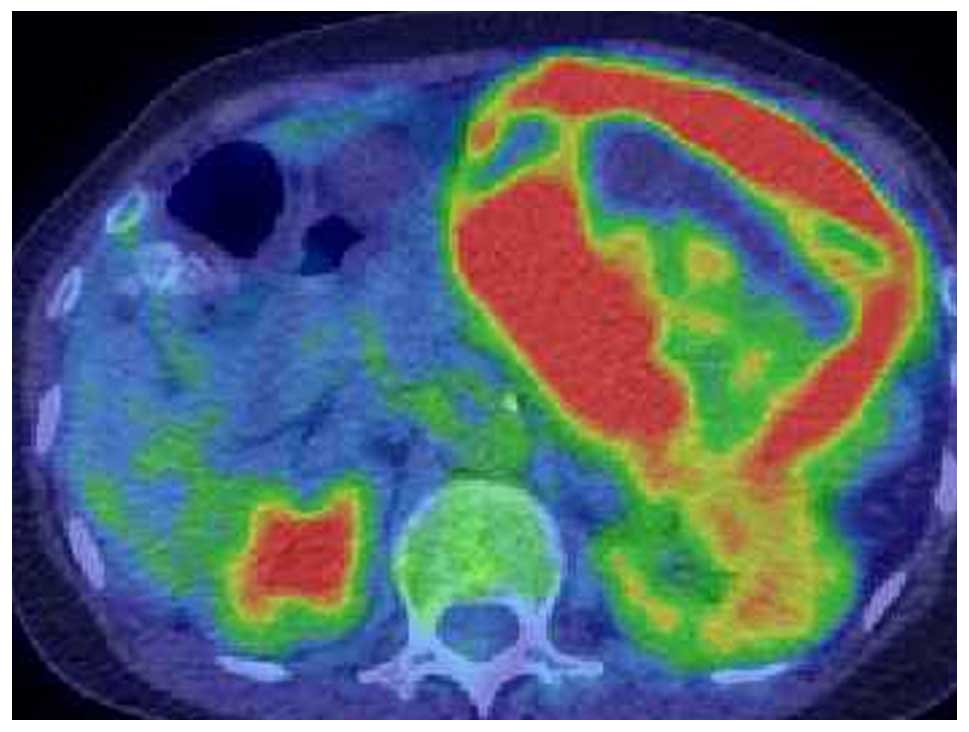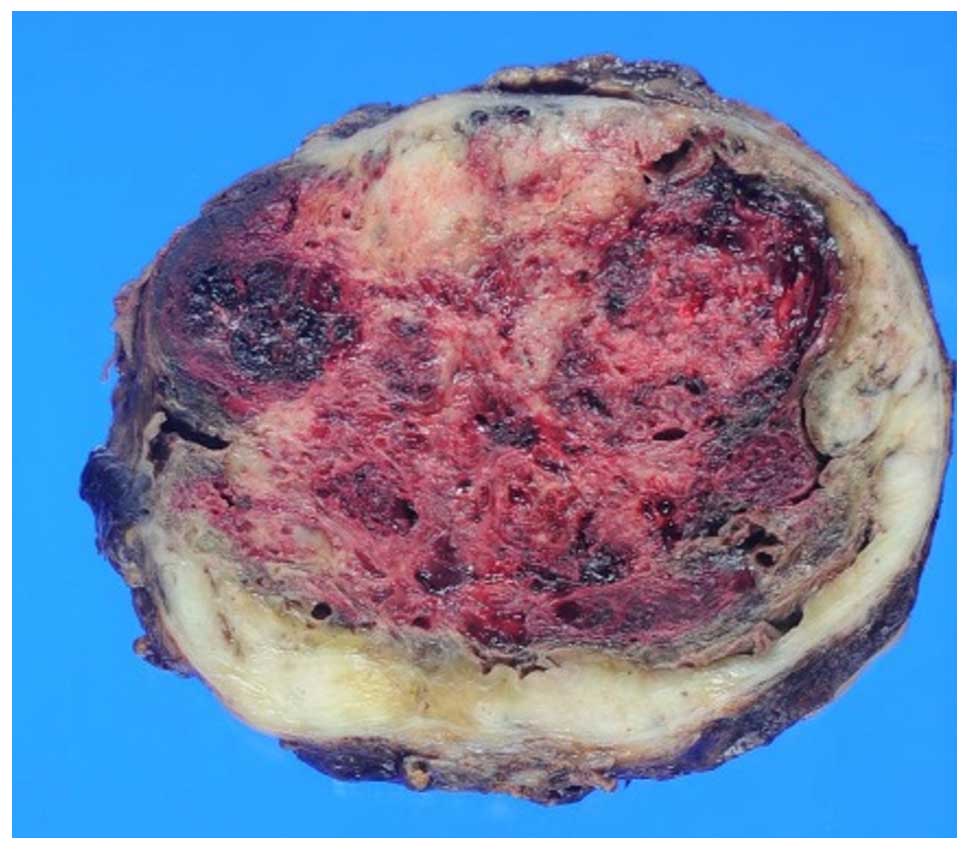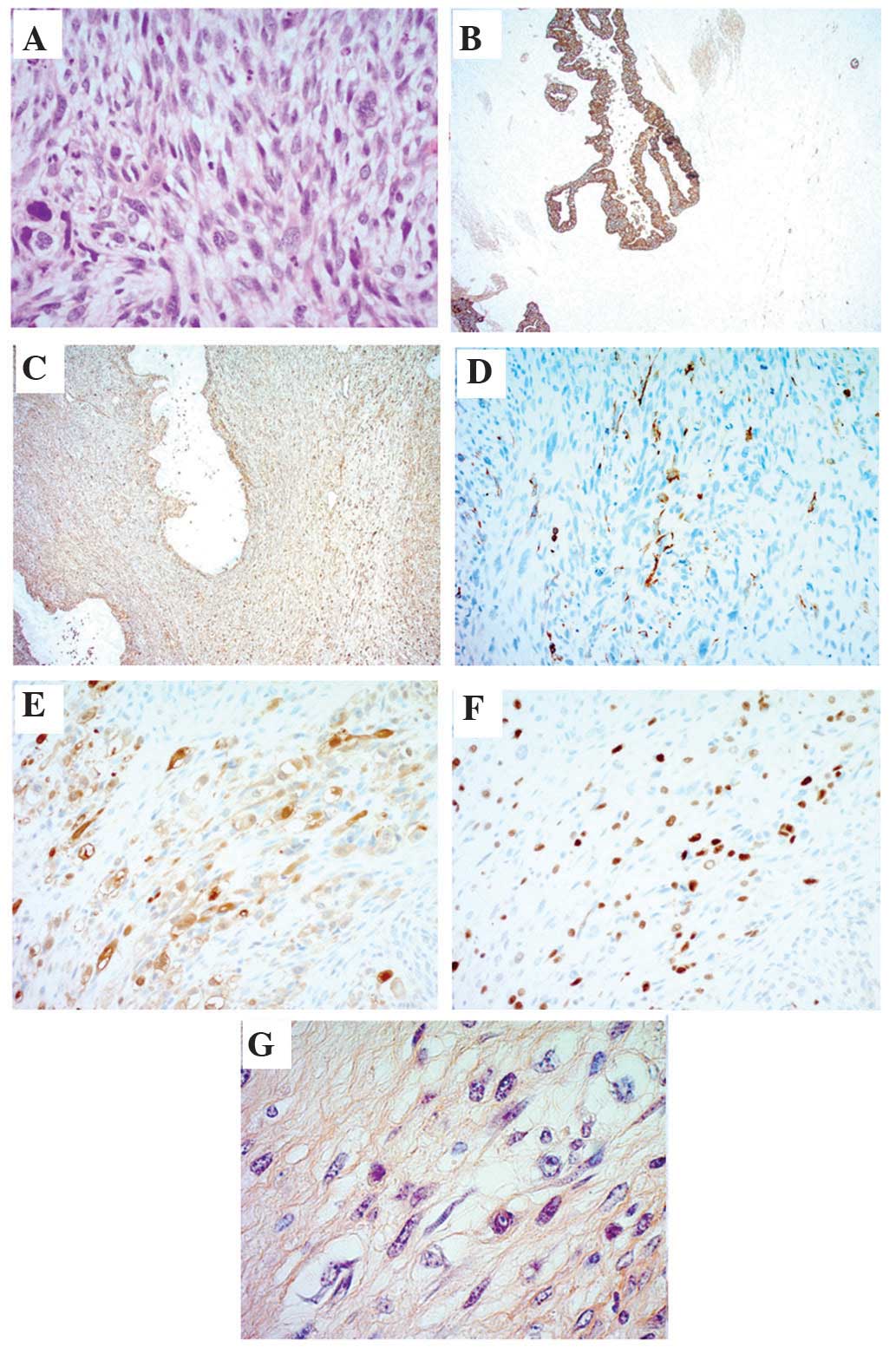A spindle cell anaplastic pancreatic carcinoma with rhabdoid features following curative resection
- Authors:
- Published online on: May 30, 2016 https://doi.org/10.3892/mco.2016.914
- Pages: 327-330
Metrics:
Total
Views: 0 (Spandidos Publications: | PMC Statistics:
)
Total PDF Downloads: 0 (Spandidos Publications: | PMC Statistics:
)
Abstract
Anaplastic pancreatic carcinoma (ANPC) accounts for ~5% of all pancreatic ductal adenocarcinoma cases. Due to its rarity, its clinical features and surgical outcomes remain to be clearly understood. A 74‑year‑old woman was admitted to Onomichi General Hospital (Onomichi, Japan) in April 2015 without any significant past medical history. Contrast‑enhanced computed tomography (CT) revealed a 9.5x8.0 cm tumor in the body and tail of the pancreas. The patient developed acute abdominal pain 3 weeks later and the CT revealed massive abdominal bleeding caused by tumor rupture. The tumor increased in size and reached 12.0x10.0 cm in maximal diameter. The tumor doubling time was estimated to be 13 days. 18F‑fluorodeoxyglucose (FDG) positron emission tomography/CT confirmed the absence of distant metastasis since FDG accumulation was detected only in the tumor lesion. Emergency distal pancreatectomy and splenectomy were performed. Histologically, the tumor was classified as a spindle cell ANPC with rhabdoid features. The patient succumbed to mortality 8 months following the surgery while undergoing systemic adjuvant chemotherapy for multiple liver metastases. ANPC is difficult to detect in the early stages due to its progressive nature and atypical radiological findings. Long‑term survival can be achieved only by curative resection; therefore, surgical resection must be performed whenever possible, even if the chance of long‑term survival following surgery is considered dismal. As the present case suggested, spindle cell ANPC with rhabdoid features is highly aggressive and curative‑intent resection must not be delayed.



